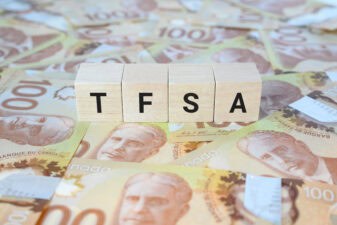According to Statistics Canada, the average tuition fee in 2015 was $6,191 per year, and that amount is projected to skyrocket to $17,200 by 2035. Some estimates put the total cost of a four-year degree in 2035 well over $100,000 when you factor in other costs like books and lodging.
The best way to meet this exorbitant future obligation can be summed up in four words: Registered Education Savings Plan (RESP). Read on to find out why you need to open an RESP today and to learn about a couple investment ideas for that account.
What’s an RESP?
In a nutshell, an RESP is an investment vehicle available to Canadian parents to save for their children’s post-secondary education. On the first $2,500 contributed annually for every child, the government will issue a Canada Education Savings Grant (CESG) equal to 20% of the contribution. There are no yearly contribution limits, but the lifetime maximum is $50,000 per child, and the CESG is capped at $7,200.
Families earning under a certain threshold may also qualify for a Canada Learning Bond on top of the CESG, and that lifetime limit is set at $2,000 per child.
The best part is that investments within an RESP grow tax-free. Let’s assume that you only qualify for the CESG and that you contribute $2,500 annually for 20 years. Let’s also assume that you earn a 6% annual return on your investments. The RESP would grow to $113,565!
How can we obtain a 6% annual return? Let’s look at a couple investment ideas that have the potential of generating this level of return over the next 20 years.
Types of investments to include in an RESP
You can hold a wide variety of investments within an RESP, including GICs, bonds, or equities. Given the 20% match offered by the government, it is not, in my opinion, necessary to take on a high level of risk when investing in an RESP. At the same time, the time horizon is usually long enough that you should be overweight in equities, especially in the early years.
Toronto-Dominion Bank (TSX:TD)(NYSE:TD) is an example of a suitable stock for an RESP. The company has delivered stellar results in the last decade, and I don’t see it slowing down anytime soon. TD targets a 7-10% adjusted EPS growth over the medium term and continues to expand its presence in the U.S.
Telus Corporation (TSX:T)(NYSE:TU) is another company that could be added to junior’s RESP today. In the most recent quarter, Telus added 152,000 new wireless, internet, and TELUS TV customers, which is up 41% over the previous year, and the average revenue per user was up 3%.
Both of these companies are also known for offering the best customer service in their respective industries, and between them you get a juicy dividend yield of 3.9%. That puts you two-thirds of the way to the 6% annual return used in the above assumption. It’s a good starting point, but investors should aim to continue adding solid companies over time to build a diversified portfolio.
Foolish bottom line
In my opinion, an RESP is by far the best vehicle to save for your kids’ education given the generous government match and the benefits derived from many years of tax-free growth. Even with these advantages, it’s mind boggling that nearly two-thirds of students today don’t have an RESP.
The great Warren Buffett once said that he wants to leave his kids “enough money so that they would feel they could do anything, but not so much that they could do nothing.” Open an RESP today to help your kids graduate debt-free, thus allowing them to feel like they can do anything.







